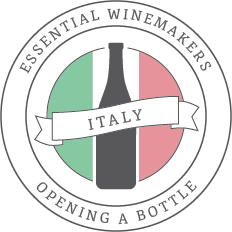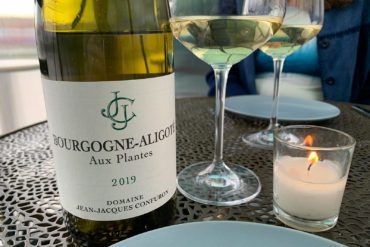Vietti

Note: For a limited time, we are making this page free to give readers a sense for the Essential Winemakers pages that are included in an Opening a Bottle subscription. Subscribe today.
Why Vietti is Essential
Iconic may be an overused word, but how else can one describe this storied estate in Castiglione Falleto? While the Vietti name first began to grace bottles in 1919, the family has been producing wine since the 19th century, and today it is among the most respected wineries in Italy.
Some of this admiration has to do with the fate-tempting streak of the Currado family. In the mid-20th century, Alfredo Currado helped pioneer the idea of single-vineyard Barolo, an act that had just as much impact on modernizing the appellation as the oft-discussed “Barolo Wars” over barrique barrels. He also dared to make a quality wine from the lowly Arneis grape, which had only been prized for its ability to distract birds from the Nebbiolo.
This contrarian streak was passed down to his son, current winemaker Luca Currado, who promptly defied his own father in the 1990s by covertly uprooting old Nebbiolo vines in the Scarrone cru and planting "second-tier" Barbera — the red grape his father had put him in charge of. (That wine is now one of the most prized Barbera wines in Italy). The fate-tempting would continue well into the modern era, eventually leading to the most controversial idea of all: selling the winery to the Krauss family of Iowa in 2016 in order to get an infusion of capital for new vineyard acquisitions. This last one had many of us worried about the fate of the much-adored estate, but here we are now, praising the new Timorasso and licking our chops at the forthcoming Barbaresco from Rabaja. While Luca Currado does his fair share of zigging while others zag, he is mostly driven by what makes sense for Vietti, and perhaps this bid to stay competitive in a landscape of soaring land prices embodies that most.
However, that’s not the reason I think Vietti is essential. Sure, the keep-you-guessing maneuvers are exciting, but truly no other producer in Italy has mastered so many different grape varieties — let alone on such a scale — as the Currados. And you won’t find any Chardonnay or other international grapes in this portfolio: they are Piedmont to the core. Best of all, Luca and his wife Elena will speak of their Arneis and their Timorasso and their Freisa with the same affection as their Barolo holdings in Lazzarito and Ravera.
Castiglione Falleto, Piedmont
Grapes: Nebbiolo, Barbera, Dolcetto, Timorasso, Arneis
Appellations/Cru: Barolo DOCG (Brunate, Ravera, Lazzarito, Roche di Castiglione and Scarrone Cru), Barbaresco DOCG (Rabaja Cru), Barbera d'Asti DOCG, Barbera d'Alba DOC, Dolcetto d'Alba DOC, Roero Arneis DOCG, Colli Tortonesi DOC
American Importer: Dalla Terra Winery Direct
Originally listed: August 2015
Renewed: May 2020
 Luca and Elena Currado in the tasting room at Vietti. ©Kevin Day/Opening a Bottle
Luca and Elena Currado in the tasting room at Vietti. ©Kevin Day/Opening a Bottle The Scarrone Cru below Vietti's medieval-period winery in Castiglione Falletto. ©Kevin Day/Opening a Bottle
The Scarrone Cru below Vietti's medieval-period winery in Castiglione Falletto. ©Kevin Day/Opening a BottleWines to Seek Out
There is an impressive array of wines at Vietti: 18 in total at last check, and none of them are duds. I’ve been tasting these wines for many years, yet these ones stand out to me as most indicative of the Vietti spirit.
Vietti Roero Arneis
Bursting with stone-fruit aromas and a rounded, supple texture, Vietti’s Roero Arneis is a consistent crowd-pleaser. The recent 2018 vintage was the best version I’ve tried in my years tasting this wine.
Vietti Derthona Colli Tortonesi Timorasso
The most complex and thrilling white wines in Piedmont come from Timorasso, and there is significant investment being made in its future by the Currados and many others. From a winemaking standpoint, it requires a ton of patience and focus, and the Currados had to start all over several times to get a Timorasso that they were proud of. Their patience paid off with this high-acid wine which impresses with aromatic acrobatics and its ability to be even more compelling on a second night.
Vietti La Crena Barbera d’Asti
Vietti’s Scarrone is its most famous Barbera, undoubtedly because of its story (see above), but I am partial to La Crena, which is more fruit-forward yet equally harmonious. At times, the aromas seem like autumn in a bottle. A dazzling, but powerful wine that frequently clocks in at 15% ABV.
Vietti “Perbacco” Langhe Nebbiolo
One could argue that Perbacco is the ideal “first taste” of Nebbiolo for newcomers to this grape. Essentially a declassified Barolo, it has all the key traits — earthiness, dark fruit, fine tannins — but for only $20.
Vietti “Castiglione” Barolo
Another superb value can be found in Vietti’s Barolo classico, a blend of different terroir from around the Barolo DOCG appellation. Taunt and dialed-in, Castiglione doesn’t so much straddle the fence of traditional versus modern winemaking techniques (or Tortonian versus Serravallian soils) as it does walk a highwire between all of them.
Vietti Ravera Barolo
Vietti’s single-vineyard Barolo wines are among the most sought-after in Italy, and they routinely fetch $200/bottle. What’s compelling about their collection is that they have a stake in several dramatically different areas, so if you can afford a comparison tasting of these wines, do it: you will see Barolo in a whole new light. That said, the one wine that stands out to me for its unprecedented depth is Ravera — a spectacular wine that suggests it would kindly like to outlive us all.
Read More About Vietti
Other Essential Winemakers
Similar in style or terroir to: Vietti
You Might Also Like
File under: Barbera Grape
Barbera: My Old Friend
In Which We Once Again Walk on the Slippery Slope of Wine and Our Day-to-Day Existence
A Vineyard’s Story: Barbera d’Asti from La Crena
In Search of Grand Cru Barbera
The Crazy Genius of Barolo’s Vietti
Breaking Bread with Luca and Elena Currado and Their Team
Oddero: Barolo With a Generational Perspective
How Each Generation Leaves Their Mark at the Iconic Italian Estate









